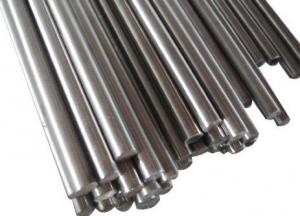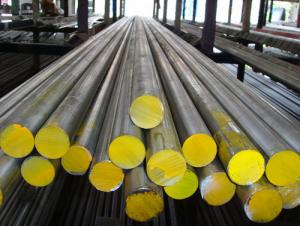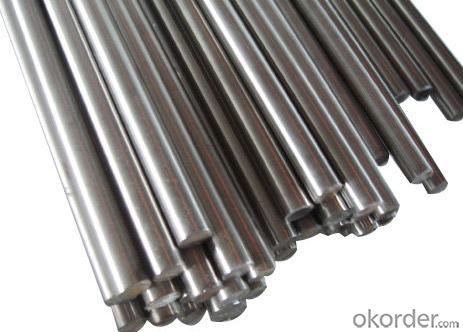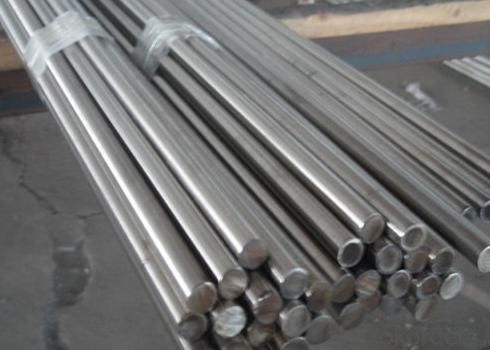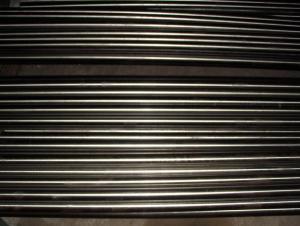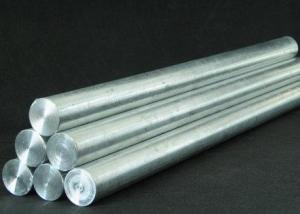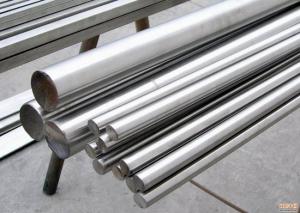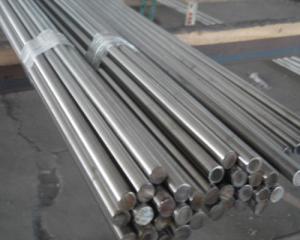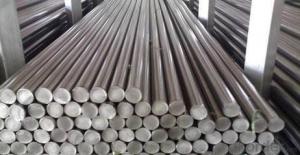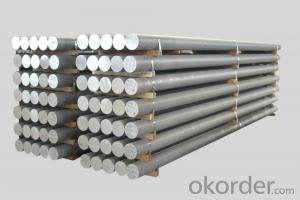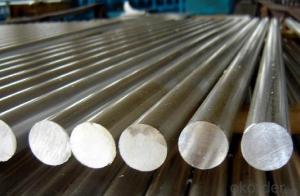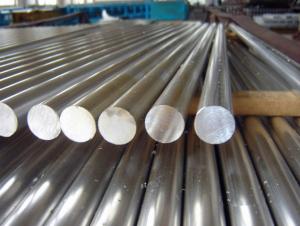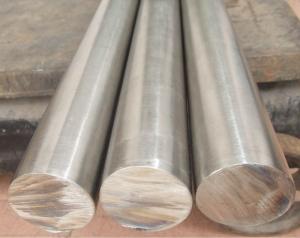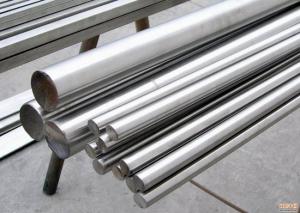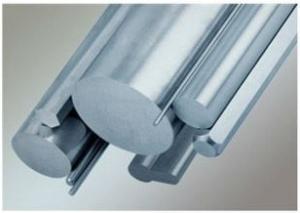304L Stainless Steel Bar
- Loading Port:
- China Main Port
- Payment Terms:
- TT or LC
- Min Order Qty:
- 5 Tons m.t.
- Supply Capability:
- 1000 Tons Per Month m.t./month
OKorder Service Pledge
OKorder Financial Service
You Might Also Like
Stainless Steel Bar
Stainless Steel Round Bright Bar
Hot-rolled Stainless Steel Black Bar
Grades:201、202、301、302、303、304、316、316L、321 etc
|
Diameter (mm) |
weight (kg/m) |
Diameter (mm) |
weight (kg/m) |
Diameter (mm) |
weight (kg/m) |
Diameter (mm) |
weight (kg/m) |
|
2 |
0.025 |
14 |
1.221 |
30 |
5.607 |
50 |
15.575 |
|
3 |
0.056 |
15 |
1.402 |
32 |
6.38 |
55 |
18.846 |
|
4 |
0.1 |
16 |
1.595 |
34 |
7.202 |
60 |
22.428 |
|
5 |
0.156 |
18 |
2.019 |
35 |
7.632 |
65 |
26.322 |
|
6 |
0.224 |
19 |
2.249 |
36 |
8.074 |
70 |
30.527 |
|
7 |
0.305 |
20 |
2.492 |
38 |
8.996 |
75 |
35.044 |
|
8 |
0.399 |
22 |
3.015 |
40 |
9.968 |
80 |
39.872 |
|
9 |
0.505 |
24 |
3.588 |
42 |
10.99 |
85 |
45.012 |
|
10 |
0.623 |
25 |
3.894 |
45 |
12.616 |
90 |
50.463 |
|
11 |
0.754 |
27 |
4.542 |
46 |
13.183 |
95 |
56.226 |
|
12 |
0.897 |
28 |
4.884 |
48 |
14.354 |
100 |
62.3 |
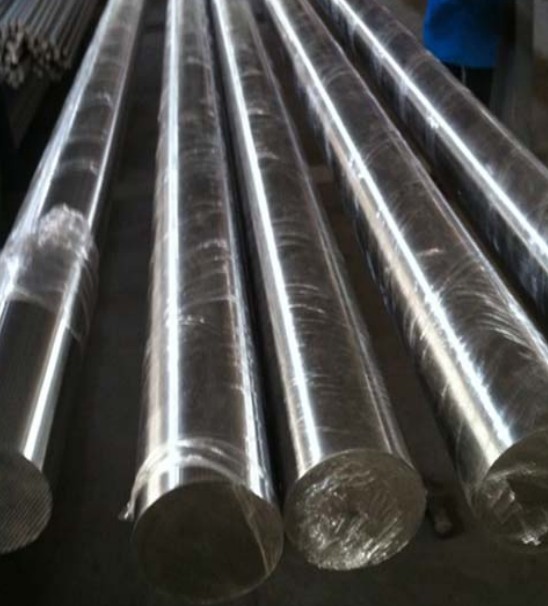
- Q: Are stainless steel bars suitable for outdoor applications?
- Stainless steel bars are highly suitable for outdoor use due to their exceptional corrosion resistance. This quality makes them a popular choice for various outdoor applications. They can endure harsh weather conditions, such as rain, snow, and sunlight, without succumbing to rust or corrosion. Moreover, stainless steel bars are known for their durability and strength, ensuring long-lasting performance in outdoor environments. They find utility in diverse fields like construction, architecture, marine industries, and outdoor furniture, among others. Furthermore, stainless steel bars require minimal maintenance and are effortless to clean, making them a practical choice for outdoor use. In conclusion, owing to their corrosion resistance, durability, and versatility, stainless steel bars offer an excellent solution for outdoor applications.
- Q: Are stainless steel bars suitable for architectural balustrades?
- Yes, stainless steel bars are highly suitable for architectural balustrades due to their durability, corrosion resistance, and aesthetic appeal.
- Q: Can stainless steel bars be used in corrosive environments?
- Stainless steel bars are capable of being utilized in environments that are prone to corrosion. The corrosion-resistant properties of stainless steel are widely acknowledged, making it a suitable choice for applications where other materials may experience corrosion or degradation. The presence of chromium in stainless steel prompts the formation of a protective oxide layer on its surface, thereby serving as a barrier against corrosion and rust. Moreover, stainless steel bars can be alloyed with molybdenum, nickel, or titanium to enhance their resistance to specific types of corrosive environments, including those containing acids, salts, or chlorides. Consequently, stainless steel bars find extensive utilization in diverse industries, such as chemical processing, marine, food processing, and pharmaceutical, where they come into contact with corrosive substances or environments.
- Q: Can stainless steel bars be used in the transportation aftermarket?
- Indeed, the transportation aftermarket can make use of stainless steel bars. With their exceptional corrosion resistance, stainless steel proves to be a flexible and long-lasting material, rendering it the perfect option for applications within the transportation sector. In fact, stainless steel bars can be employed in an assortment of aftermarket components, including but not limited to truck accessories, trailer parts, railings, and brackets. These bars not only provide robustness and stability but also endure harsh environmental conditions, such as moisture, chemicals, and extreme temperatures. Moreover, stainless steel bars possess aesthetic appeal and necessitate minimal upkeep, ultimately making them a cost-effective solution for the transportation aftermarket.
- Q: Can stainless steel bars be used in oil and gas industries?
- Yes, stainless steel bars can be used in oil and gas industries. Stainless steel is known for its corrosion resistance properties, making it an ideal material for applications in harsh environments such as the oil and gas industry. The bars can be used for various purposes including construction of pipelines, storage tanks, valves, and other equipment. The resistance to corrosion helps prevent the bars from deteriorating over time, ensuring the longevity and reliability of the infrastructure in the oil and gas industry. Additionally, stainless steel bars offer high strength and durability, making them suitable for handling the high pressure and extreme temperatures often encountered in the oil and gas sector. Overall, stainless steel bars are a preferred choice in the industry due to their ability to withstand the demanding conditions and provide long-lasting performance.
- Q: What's the difference between 304 stainless steel round bar and 304F stainless steel round bar?
- The 304F standard hardness of HRB 90-100, which belongs to BITAUTO stainless steel, 304F stainless steel bar by a small amount of sulfur and phosphorus added to more than 304 cutting 304F stainless steel rod, belonging to the 304 series of national standard (0Cr18Ni9)
- Q: What is the difference between centerless ground and peeled stainless steel bars?
- The main difference between centerless ground and peeled stainless steel bars lies in the manufacturing process. Centerless ground bars are produced by grinding the surface of the stainless steel bar to achieve precise dimensions and a smooth finish. This process removes any imperfections and ensures tight tolerances. On the other hand, peeled stainless steel bars are created by removing the outer layer of the stainless steel bar through a peeling process. This results in a smooth, clean surface while retaining the original size of the bar. Overall, centerless ground bars are more suitable for applications that require precise dimensions, while peeled bars are preferred when a smooth surface finish is the main requirement.
- Q: Can stainless steel bars be used in the construction of bridges?
- Yes, stainless steel bars can be used in the construction of bridges. Stainless steel is a versatile and durable material that has many advantages over other types of steel. It offers excellent resistance to corrosion, which is particularly important for structures exposed to harsh weather conditions or environments with high levels of moisture or salt. Stainless steel bars also have a high strength-to-weight ratio, making them suitable for applications where a high load-bearing capacity is required. Additionally, stainless steel is aesthetically pleasing and can provide a modern and sleek appearance to bridge structures. Overall, stainless steel bars are a viable and practical option for the construction of bridges, offering durability, strength, and corrosion resistance.
- Q: How do stainless steel bars compare to aluminum bars?
- Stainless steel bars and aluminum bars are two popular materials used in various industries for different applications. When comparing stainless steel bars to aluminum bars, several factors should be considered, including strength, corrosion resistance, durability, cost, and versatility. In terms of strength, stainless steel bars typically offer higher tensile strength and hardness compared to aluminum bars. This makes stainless steel bars more suitable for applications that require robust and durable materials, such as structural supports, heavy machinery, and construction projects. Aluminum bars, on the other hand, have lower tensile strength but are lighter in weight, which makes them ideal for applications where weight reduction is crucial, such as aerospace components or transportation industries. In terms of corrosion resistance, stainless steel is highly resistant to rust, stains, and corrosion due to its chromium content. This makes stainless steel bars suitable for outdoor or marine applications, where exposure to moisture and harsh weather conditions is common. Aluminum bars, while relatively corrosion-resistant, can still corrode when exposed to certain environments, requiring protective coatings or treatments to enhance their durability. Durability is another important aspect to consider. Stainless steel bars have excellent durability and can withstand extreme temperatures, heavy loads, and impact, making them suitable for demanding environments. Aluminum bars have good durability but may be more susceptible to deformation or bending under heavy loads. Cost is a significant factor to consider when choosing between stainless steel bars and aluminum bars. Generally, stainless steel bars are more expensive than aluminum bars due to their higher production costs and material properties. However, the longevity and robustness of stainless steel may offset the initial cost difference in the long run, especially in applications where durability and resistance to corrosion are crucial. Lastly, versatility is an essential factor to consider. Stainless steel bars come in various grades and finishes, allowing them to be tailored to specific applications. They can be easily welded, machined, and fabricated, making them suitable for a wide range of industries. Aluminum bars, on the other hand, are lightweight and easy to work with, making them ideal for applications that require flexibility, such as decorative or architectural projects. In conclusion, stainless steel bars and aluminum bars have their own strengths and weaknesses. Stainless steel bars offer superior strength, corrosion resistance, and durability, making them suitable for heavy-duty applications. Aluminum bars, on the other hand, are lighter in weight and more cost-effective, making them ideal for applications where weight reduction is crucial. Ultimately, the choice between stainless steel bars and aluminum bars depends on the specific requirements of the application and the desired properties needed for the project.
- Q: How about 440C stainless steel?
- 420 steel than 440C soft, selling point is super rust resistance, good processing, cheap, good toughnessD2 steel is stiffer and has better blade retention than 440C, but it has less toughness and is easier to rust (can only be called semi stainless steel)
Send your message to us
304L Stainless Steel Bar
- Loading Port:
- China Main Port
- Payment Terms:
- TT or LC
- Min Order Qty:
- 5 Tons m.t.
- Supply Capability:
- 1000 Tons Per Month m.t./month
OKorder Service Pledge
OKorder Financial Service
Similar products
Hot products
Hot Searches
Related keywords
